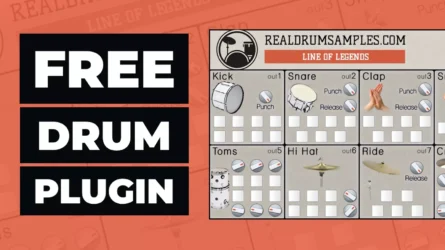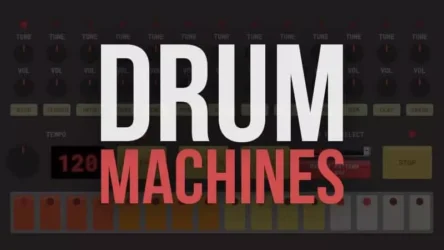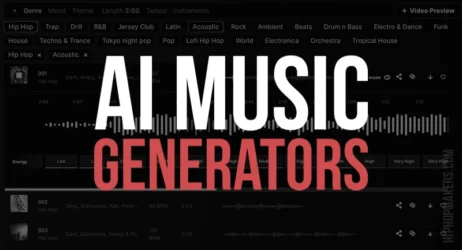This guide will answer what modes are in music theory, how you identify modes, the different types of modes, and how to use modes when creating music.
What Are Modes In Music Theory?
A mode in music theory is a pattern of notes that begins on a particular pitch. A mode usually has a certain feel or sound associated with it. There are seven modes in music: Ionian, Dorian, Phrygian, Lydian, Mixolydian, Aeolian, and Locrian.
- What Are Modes In Music Theory
- How Do You Identify Modes In Music
- What Are The 7 Modes In Music
- Difference Between Modes & Scales
- How Do You Use Modes In Music
- What Are The Musical Modes In Order
- How Do You Make Modes
- How Do You Practice Modes
What Are Modes In Music Theory?
Modes are created by starting on a particular note and playing all notes in a series ascending or descending. This creates a pattern of notes that is a mode.
Modes in music theory have a significant role in creating songs. They are sometimes called “scales,” but they are different from the scales you learn in your beginner guitar lessons.
The modes are made by playing all of the notes in a series ascending or descending. For example, if you wanted to create Ionian mode starting on C, you would play the notes in this order C, D, E, F, G, A, and B.

Every mode is made by following this order of notes, but the order is different depending on which note you start on.
What’s The Importance Of Modes In Music?
Modes are important in music theory because they have a significant role when creating songs. They are also used to write out melodies. Also, modes can help you understand harmony.
Music theory wouldn’t be the same without modes. They are used in nearly every type of music, from classical to pop to jazz.
Are Modes Necessary In Music?
In a way, modes are necessary for music theory. If you want to be a professional musician or songwriter, you will need to know what modes are and how to use them.
But, it’s also important to know that not every song or musical composition needs modes to be a hit. You don’t necessarily need to know modes to play the guitar, piano, or sing.
What’s The Happiest Mode in Music?
The happiest mode in music is the Ionian mode. This doesn’t mean that every song written in Ionian will automatically be happy; it just means that Ionian sounds happier than the other modes.
This is because Ionian is a relative major to C Major. And since C Major is a happy-sounding key, Ionian also sounds happier.
What’s The Saddest Mode In Music?
The saddest mode is the Aeolian mode. This doesn’t mean that every song written in Aeolian will be sad; it just means that Aeolian sounds sadder than the other modes.
Aeolian sounds the saddest because it’s a relative minor to C Major. Since C Major is an upbeat key, Aeolian sounds sadder in comparison.
How Do You Identify Modes In Music?
There are two ways to identify modes. The first is to look at how it starts. This is because every mode has a different starting pitch, which means they have a different scale pattern.
Another way to identify modes is by the type of sound that it makes. This is because each mode sounds different and has a different feel.
If you want to identify a mode, use the note’s starting pitch to determine what mode you are in. For example, if I played notes in ascending order and started on C, I would be in Ionian mode. If I were playing notes in ascending order beginning with G, I would be in Mixolydian mode, etc.
What Are The 7 Modes In Music?
The seven modes in music are Ionian, Dorian, Phrygian, Lydian, Mixolydian, Aeolian, and Locrian. Each mode is made by playing all of the notes in a series ascending or descending.
1. Ionian Mode
Ionian starts on the first note of a major scale and is made by playing all of the white notes in order. For example, if you wanted to make an Ionian start on note C, you would play all of the white notes starting on C in order.
2. Dorian Mode
Dorian mode starts on the second note of a major scale and is made by playing all of the white notes, starting on the second note in the order. For example, if you wanted to make a Dorian start on note C, you would play all of the white notes starting on D in order.
3. Phrygian Mode
The Phrygian mode starts on the third note of a major scale and is made by playing all of the white notes, starting on the third note in order. For example, if you wanted to make a Phrygian start on note C, you would play all of the white notes starting on E in order.
4. Lydian Mode
Lydian mode starts on the fourth note of a major scale and is made by playing all of the white notes, starting in the fourth note. For example, if you wanted to make a Lydian start on note C, you would play all of the white notes starting on F in order.
5. Mixolydian Mode
Mixolydian mode starts on the fifth note of a major scale and is made by playing all of the white notes, starting on the fifth note in the order. For example, if you wanted to make a Mixolydian start on note C, you would play all of the white notes starting on G in order.
6. Aeolian Mode
The Aeolian mode starts on the sixth note of a major scale and is made by playing all of the white notes, starting on the sixth note in the order. For example, if you wanted to make an Aeolian start on note C, you would play all of the white notes starting on A in order.
7. Locrian Mode
The Locrian mode starts on the seventh note of a major scale and is made by playing all of the white notes, starting in the seventh note. For example, if you wanted to make a Locrian start on note C, you would play all of the white notes starting on B in order.
What Is The Difference Between A Mode And A Scale?
Modes and scales are two different things. A scale is a set of notes played within an octave, whereas modes are patterns of notes that create different sounds.
A scale is also made in different ways than modes. Modes are created by playing all of the notes in a series ascending or descending, whereas scales are created by playing all of the notes in a certain order.
How Do You Use Modes In Music?
Modes are used to create songs or pieces of music. Each mode has a different sound and feel, so they can help you determine which mode would be best for your piece, depending on what you want.
When creating songs, modes can also be altered using accidentals such as flats and sharps to get the right feel or sound to your music and make the song sound more professional.
Additionally, modes can be altered by changing the starting pitch. For example, the Ionian mode is considered “happy” because it starts on a major chord, whereas the Aeolian mode is considered “sad” because it starts on a minor chord.
What Are The Musical Modes In Order?
There are seven musical modes used to create different songs or pieces of music. The following are the seven musical modes, in order:
- Ionian
- Dorian
- Phrygian
- Lydian
- Mixolydian
- Aeolian
- Locrian
How Do You Make Modes?
Modes are created by playing all of the notes in a certain order. Modes are not made using scales because modes are used to create different sounds and feels depending on what you want your piece of music to sound like.
Modes are made by playing all of the notes in a series ascending or descending. This creates a specific order of notes that creates different sounds and feelings.
How Do You Practice Modes?
To practice modes, you need to memorize the order of notes, starting on the first note in the order. You can start by playing each mode ascending and descending to help yourself memorize the order of notes. You can also do this by starting on an upper note and playing all of the white notes in the order or starting on a lower note and playing all of the white notes.
Finally, you can start by playing each mode ascending and descending one note at a time. By doing this, you will be able to figure out how each mode sounds and feels compared to the others.
By learning how to create modes and use them in music, you will be able to write songs with a different feel or sound than others. This will help you write songs unique to you and your music.
Summary of Music Modes
Modes in music are patterns of notes that begin on a particular pitch. These patterns usually have a specific feel or sound to them. Modes are divided into seven types: Ionian, Dorian, Phrygian, Lydian, Mixolydian, Aeolian, and Locrian.
I hope you now understand music modes and how to use them when creating music.




